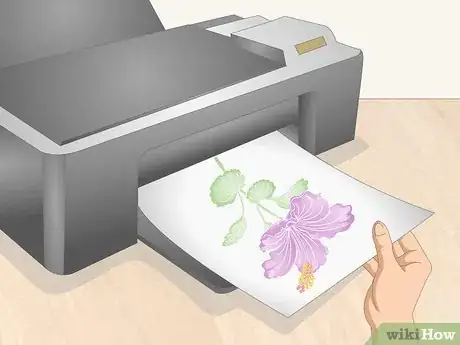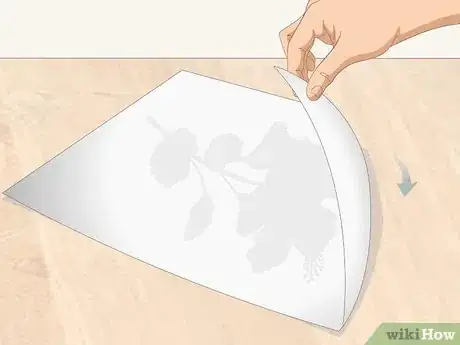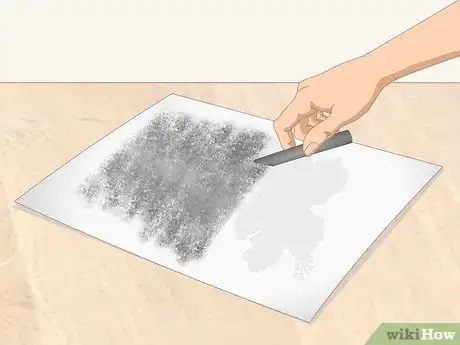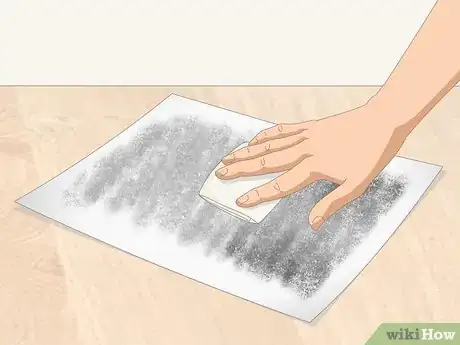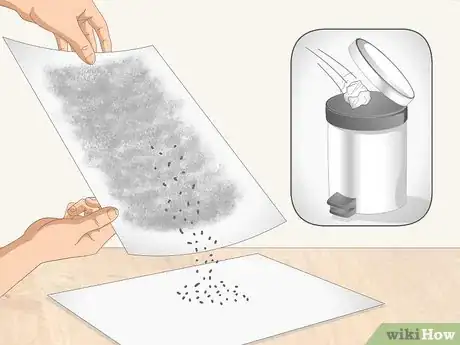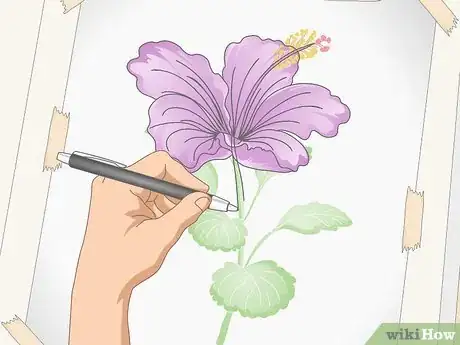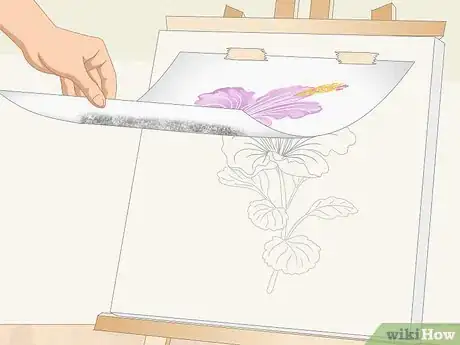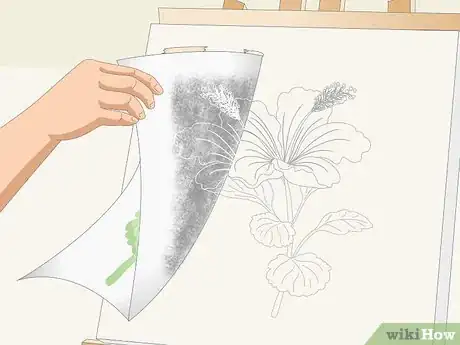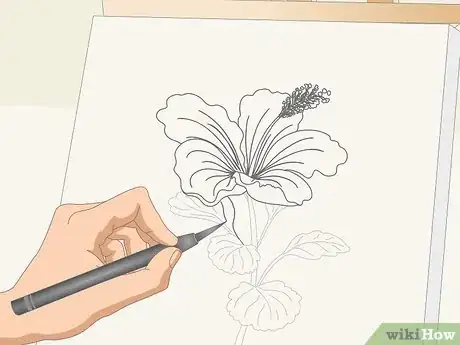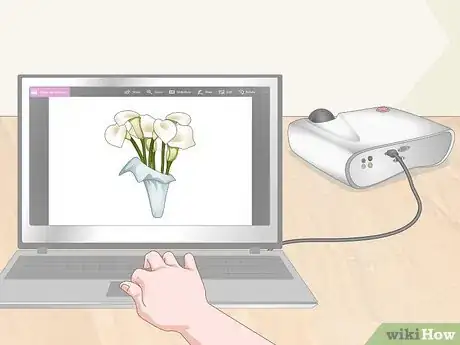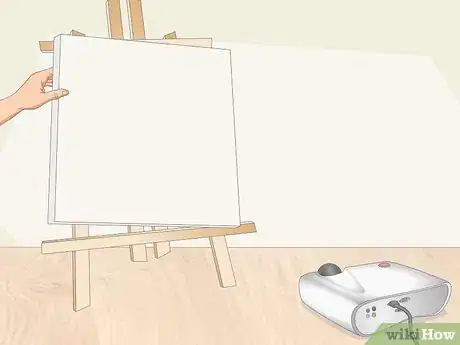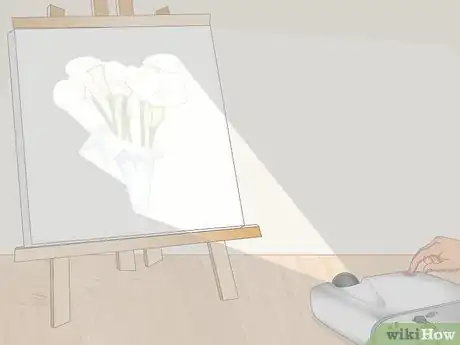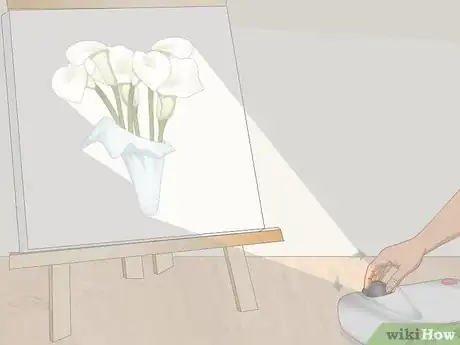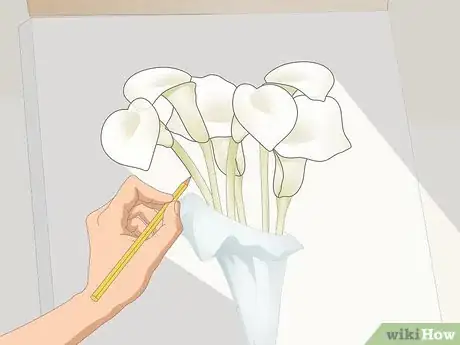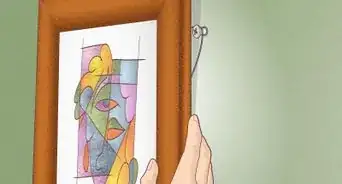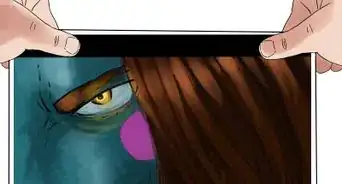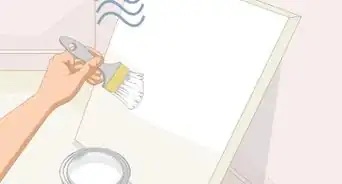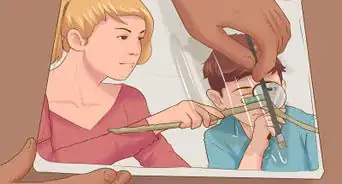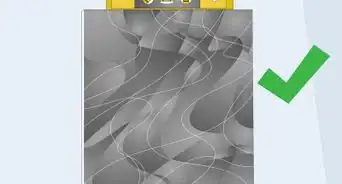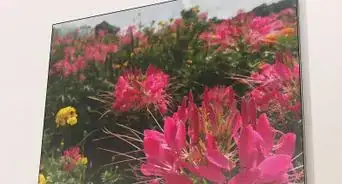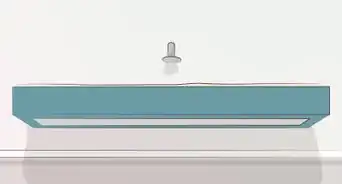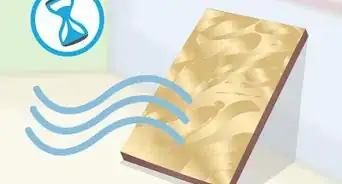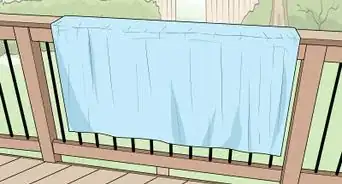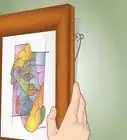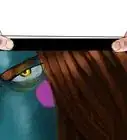This article was co-authored by Kelly Medford. Kelly Medford is an American painter based in Rome, Italy. She studied classical painting, drawing and printmaking both in the U.S. and in Italy. She works primarily en plein air on the streets of Rome, and also travels for private international collectors on commission. She founded Sketching Rome Tours in 2012 where she teaches sketchbook journaling to visitors of Rome. Kelly is a graduate of the Florence Academy of Art.
This article has been viewed 73,102 times.
When you want to transfer a drawing to a canvas so you can paint it, it’s fairly simple to do with charcoal and a few other art supplies. It can be a messy process because of the charcoal, so be sure to make a copy of the drawing for doing the transfer and pick an easy-to-clean work area. Another option is to project an image onto a canvas with a projector and trace the lines you want to transfer. With the right tools and a little patience, your drawing will soon be transferred to your canvas and you can bring it to life with paint!
Steps
Transferring a Drawing with Charcoal
-
1Print out or make a copy of the drawing you want to transfer. You will be covering the back of the drawing in charcoal to transfer it to the canvas. Copy it so you don’t have to do this to the original copy of the drawing.[1]
- You can also change the size of the drawing when you do this if you want it to fit on a smaller or larger canvas.
Tip: If you don’t have a copier at home, go to the nearest printing center to make a copy of the drawing. The employees can also help you blow up or shrink the size.
-
2Flip the copy of the drawing over on a flat work surface. Place the copy face down on a hard, flat surface. You will probably get some charcoal powder on the surface, so make sure it is easy to clean.[2]
- You can do this on a desk, table, or even the floor.
Advertisement -
3Cover the back of the paper in charcoal wherever there are lines. Use a soft charcoal stick to rub over the back of the lines. Use side-to-side motions with the side of the charcoal stick to cover more area at once. [3]
- If there are any large spaces without lines on the drawing, then you can hold the copy up to a window and mark those areas with a pencil before you start coloring the paper with charcoal. This way, you can more easily avoid those spots to save time and charcoal.
- If you don't have a lot of charcoal, just retrace over the lines of the main shapes instead.[4]
-
4Work the charcoal into the paper with a paper towel. Fold a paper towel up into a small rectangle. Rub it over all the charcoal-covered areas in circular motions to blend the charcoal into the paper.[5]
- The charcoal will look darker after you rub it in. Try to make it all an even shade.
-
5Shake off any loose charcoal dust onto a piece of paper and toss it. Carefully lift up the paper by the sides, curling them slightly upwards to keep the loose dust on the paper. Pour the charcoal powder off onto a spare piece of paper, then crumple it up and put it in the recycling.[6]
- You could also just pour the dust into a trash bin if there is one nearby. Just be careful not to spill any charcoal on a carpet or anywhere that it might stain.
-
6Tape the drawing to the canvas, charcoal side down, with masking tape. Position the drawing face up where you want it on the canvas.[7] Place a square of masking tape in each corner and several squares along the edges to hold the paper in place.[8]
- The number of pieces of tape you need will depend on the size of the drawing. Placing one every 1 in (2.5 cm) or so will do the trick.
-
7Trace over the lines of the drawing with a ballpoint pen. Apply firm pressure as you go over the lines. This will transfer the charcoal to the canvas to recreate the lines of the drawing.[9] [10]
- Try to keep your hand off the drawing as you go over the lines as much as possible so you don’t rub any excess charcoal onto the canvas.
-
8Untape the drawing everywhere except for along the top and look under it. Remove the tape carefully from the bottom corners, bottom edge, and sides. Gently lift up the paper by the bottom edge and peek under it to see if the drawing transferred all the way.[11]
- If you see any spots that didn’t transfer well or spots that you missed, then re-tape the drawing and go over the lines with the ballpoint pen again.
-
9Remove the drawing when you are happy with the transfer. Untape the top corners and edge when all the lines are on the canvas. Discard the charcoal-covered paper.[12]
- The transferred lines will be very delicate at this point, so be careful not to rub them with anything or you will smudge the charcoal.
-
10Fix the lines by tracing over them with an India ink pen. Use a fine-tipped India ink pen to trace over the transferred lines. This will fix the outlines of your drawing so the canvas will be ready for paint.[13]
- India ink is a black ink commonly used for drawing and outlining, especially for comics. You can get an India ink pen at an art supply store.
Tip: If you don’t want to trace over the whole outline again, you can also spray the lines with something like makeup fixing spray to keep them from smudging.
Using a Projector to Transfer an Image
-
1Load an image into a projector. Some projectors connect to a computer to project a digital image and some require you to load a hard copy into the projector. Load an image that you want to transfer according to the type of projector you have available.[14]
- The advantage of using a digital projector is you aren’t just limited to transferring your drawings to canvas. You can find any kind of digital image to use as a reference, such as a photo, and trace the outline onto the canvas to fill in with paint.
-
2Place your canvas in front of the projector. Set up your canvas on an easel or another kind of stable stand. Place it about 5–10 ft (1.5–3.0 m) in front of the projector, depending how much space you have and how big you want the image to be.[15]
- You can adjust the distance between the canvas and the projector after you project the image to position it just right on the canvas.
Tip: The closer the projector is to the canvas, the bigger the image will be.
-
3Turn out the lights and turn the projector on. Make the room as dark as you can by turning off the lights and covering any windows or other sources of light. Turn on the projector to start projecting the image on the canvas.[16]
- Adjust the distance between the canvas and the projector if the image is really big or really small on the canvas. You can also make minor adjustments later using the projector’s zoom feature to get the size perfect.
-
4Adjust the projector’s lens to focus the image on the canvas. Turn the ring around the lens back and forth to find the right focus for the image. Leave it when the lines are clear and sharp enough for you to trace.[17]
- Make any final adjustments to the size of the image after it is in focus using the zoom feature on the projector.
-
5Trace the image onto the canvas with a pencil. Use a pencil to trace all the lines you want to transfer to the canvas. Trace the entire image if you are using a drawing or trace the outline and specific features if you are using something like a photo.[18]
- You can go over the lines when you are done with a fine-tipped India ink pen if you want them to be darker and more defined.
Expert Q&A
-
QuestionWhat kind of paper do I use to transfer drawings to canvas?
 Kelly MedfordKelly Medford is an American painter based in Rome, Italy. She studied classical painting, drawing and printmaking both in the U.S. and in Italy. She works primarily en plein air on the streets of Rome, and also travels for private international collectors on commission. She founded Sketching Rome Tours in 2012 where she teaches sketchbook journaling to visitors of Rome. Kelly is a graduate of the Florence Academy of Art.
Kelly MedfordKelly Medford is an American painter based in Rome, Italy. She studied classical painting, drawing and printmaking both in the U.S. and in Italy. She works primarily en plein air on the streets of Rome, and also travels for private international collectors on commission. She founded Sketching Rome Tours in 2012 where she teaches sketchbook journaling to visitors of Rome. Kelly is a graduate of the Florence Academy of Art.
Professional Artist You can use transfer paper or tracing paper to put your drawing onto a canvas.
You can use transfer paper or tracing paper to put your drawing onto a canvas.
Things You’ll Need
Transferring a Drawing with Charcoal
- Drawing
- Canvas
- Charcoal sticks
- Paper towels
- Ballpoint pen
- India ink pen
- Masking tape
Using a Projector to Transfer an Image
- Projector
- Digital image or hard copy of an image
- Canvas
- Easel or stand
- Pencil
- India ink pen (optional)
References
- ↑ http://www.beginnersschool.com/2014/03/21/quick-and-dirty-tricks-for-getting-your-image-onto-canvas/
- ↑ https://www.bryanlarsen.com/transferring-a-large-drawing-to-canvas/
- ↑ https://www.bryanlarsen.com/transferring-a-large-drawing-to-canvas/
- ↑ Kelly Medford. Professional Artist. Expert Interview. 10 March 2021
- ↑ https://www.bryanlarsen.com/transferring-a-large-drawing-to-canvas/
- ↑ https://www.bryanlarsen.com/transferring-a-large-drawing-to-canvas/
- ↑ Kelly Medford. Professional Artist. Expert Interview. 10 March 2021
- ↑ https://www.youtube.com/watch?v=QUcuN-RxOac&feature=youtu.be&t=92
- ↑ Kelly Medford. Professional Artist. Expert Interview. 10 March 2021
- ↑ https://www.bryanlarsen.com/transferring-a-large-drawing-to-canvas/
- ↑ https://www.bryanlarsen.com/transferring-a-large-drawing-to-canvas/
- ↑ https://www.bryanlarsen.com/transferring-a-large-drawing-to-canvas/
- ↑ https://www.bryanlarsen.com/transferring-a-large-drawing-to-canvas/
- ↑ http://www.beginnersschool.com/2014/03/21/quick-and-dirty-tricks-for-getting-your-image-onto-canvas/
- ↑ http://www.beginnersschool.com/2014/03/21/quick-and-dirty-tricks-for-getting-your-image-onto-canvas/
- ↑ http://www.beginnersschool.com/2014/03/21/quick-and-dirty-tricks-for-getting-your-image-onto-canvas/
- ↑ http://www.beginnersschool.com/2014/03/21/quick-and-dirty-tricks-for-getting-your-image-onto-canvas/
- ↑ http://www.beginnersschool.com/2014/03/21/quick-and-dirty-tricks-for-getting-your-image-onto-canvas/
